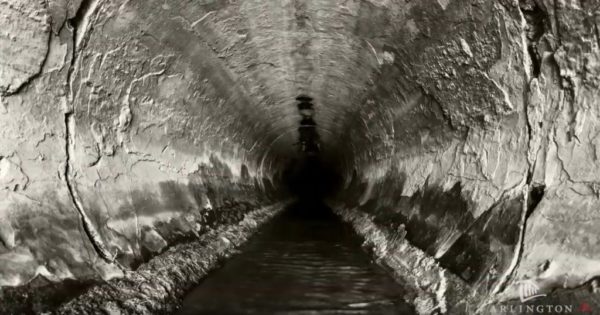Have you seen Arlington utility workers feeding what looks like a giant flat worm into your neighborhood manhole?
The process is part of a project to repair sewers countywide. This week, you’ll spot workers on the 6000 block of 2nd Street N., and between W. Glebe Road and S. Fern Street on S. Glebe Road, according to Peter Golkin, spokesman for the Department of Environmental Services.
Above is a video that takes you down the sewer to see the process for yourself. The February video shows work on the four-mile “relief” sewer line along S. Glebe Road, which failed an inspection in 2015 because the pipe’s eroded interior. Digging up and replacing even 75 percent of the pipe could take up to a year and cost millions of dollars, workers said, which is why the county reuses pipes like this one by fixing the inside.
Workers feed a giant, flat polyester and fiber glass bag into sections of the pipe via the manholes. Then they heat up the so-called “cured in place pipe” with steam or hot water to cook resin in the bag. As the beat is “cured” for several hours it begins inflate around the interior of the pipe and harden.
The whole process takes about a day from start to finish and the newly outfitted pipes have an estimated lifespan of 50 years, per the county’s website. Relined pipes also have a better “flow capacity,” meaning they can move more sewage. But best of all, they prevent utility workers from having to rip up the streets.
“As you’d imagine, the savings in terms of money and time are substantial with relining,” Golkin told ARLnow. “At least half the cost, not to mention fewer months and traffic disruptions.”
Arlington hires contractors every year as part of a $16-million-dollar Capital Improvement Program to reline about seven miles of the county’s sewers.


